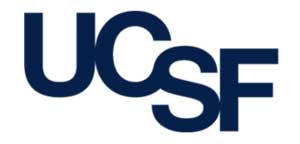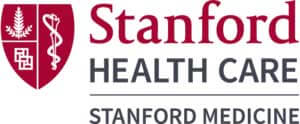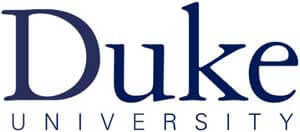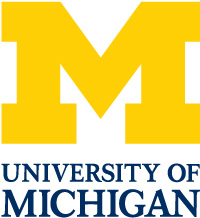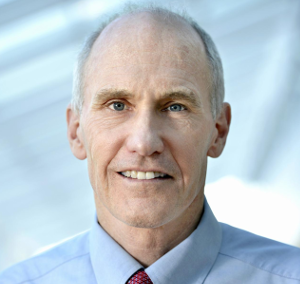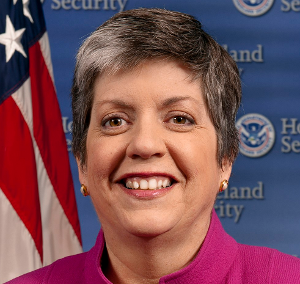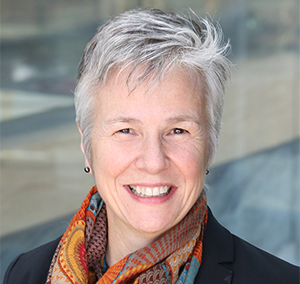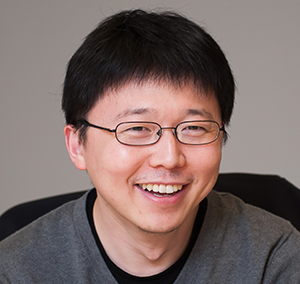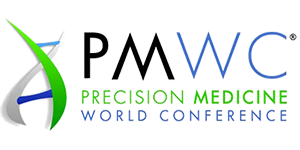“Treating a cancer patient without the benefit of modern software is the same as driving at night without headlights”
At this past Precision Medicine World Conference PMWC 2018 Silicon Valley Eric Lefkofsky (CEO of Tempus and co-founder of Groupon) was interviewed by Atul Butte (M.D., Ph.D., Director, Institute for Computational Health Sciences, UCSF) over a Fireside Chat. Eric shared with the audience his views on the biggest challenges of cancer treatment and how to best address those challenges by finding value in the data.
Eric Lefkofsky: “Treating a cancer patient without the benefit of modern software is the same as driving at night without headlights. If you don’t introduce some amount of data, you will end up going down the wrong path.”
Our experience stems from our work with about 50 of all 69 NCI cancer centers and a few hundred hospitals, or in other words by working with about 25% of all cancer patients. There are so many different types of treatments one can give a cancer patient and in all conversations with physicians, we learned that they are frustrated with the lack of data for guided treatments. This has to stop!
Atul Butte: How did you get from Groupon to Tempus? This is a radical shift.
Eric L.: I spent the last 20 years building technology companies in different sectors that do the same thing: they structure unstructured, messy data – we had done that at scale with 15,000 individuals working with that data. About 3.5 years ago my wife was diagnosed with breast cancer, as a result I spent a lot of time in the clinic and was surprised by the little amount of data that had permeated her care, even though she received great care.
After doing quite a bit of research, talking to physicians and private data companies, it became apparent to me that the underlying data infrastructure – at least in the area of cancer – was entirely broken. To solve the problem and arm the physicians and researchers with the right data they need, the data needs to be completely redone. Meaning: we had to rip clinical data out of these large medical record systems; we had to be able to abstract that data to produce structured clinical records; we had to combine the clinical data with molecular data; we had to combine that with bioinformatics and analytics tools to make sense of this data volume; and we had to do all of that at low cost and essentially in real time.
Atul Butte: So your strategy is to go after the top cancer centers – some would argue that those are the toughest customers with a lot of egos and prima-donnas. This is high risk and now you are in about 50 of them, yes?
Eric L.: Since we knew that this was a tricky problem, from the get go we targeted academic medical centers and cancer centers,. The tricky part is not on the data collection side, but making sense of the data and bringing it to patients. The advantage that these large medical centers have is that they are running so many clinical trials, and they have large researcher groups that are comfortable of making sense of this data.
We have accumulated large amounts of data, both clinical and molecular. I refer to them as clinically annotated exomes of data. Let’s say in pancreatic cancer we have 5,000 plus clinically annotated exomes of data or large amounts of data. When you look at the clinical variability of therapies, the off-labeled drugs, the doses for which there is no approved standard of these patients, it is unbelievable. Like we show a demo and we start scrolling through the combinations and there are literally thousands of combinations available for these pancreatic cancer patients. But as of now that data is lost. We are running every day the largest phase III clinical trial in the world and yet all of that data is not captured. So, the first step in the war – if you want to usher in any form of precision medicine – is to capture the data and build some kind of model to structure it and combine it with molecular data and then put it in people’s hands.
Atul Butte: Let me hype this up a bit – I want to make sure the audience fully understand what this means. I have seen your demo and to be fair it is very impressive. Your company is 2.5 years old and to date you raised $130M to Series C – I am amazed that you even built this team with these incredible scientists. How did you do that?
Eric L.: It’s crazy, but we still think of ourselves as being in stealth mode. In large part because we have tried to stay away from some of the publicity that others wanted to get early in their life cycle. Also, even though we put $130M in, we are about to put another $100M in and we have the luxury of not needing that money the same way as other startup companies need that money. I was at JP Morgan and all these startup/private companies are doing an investor presentation and I could not quite figure out why a private company would go through that public scrutiny, but of course you have to do that if you are private company and you need capital.
We are a very problem-focused company. We view this data challenge as a problem that can be solved. Meaning we can put rich data into the hands of oncologists, pathologists, radiologists, surgeons, or researchers and we believe if you do that – though this is still unknown – that you end up saving most probably 100,000 of the 600,000 patients a year from dying. That is the only thing we are thinking about. Whatever flows in, in terms of money or rounds of capital, is great, but we have to start saying here is the problem and can we solve it.
Atul Butte: I am really impressed by your strategy to go after the data, clinical records, and that you not just offer it as a diagnostics. I remember your strategy to get archival samples, and as long as there is a record with it, you want to get a handle on that cancer to learn about it what worked and what did not work. That is an amazing strategy.
Eric L.: We abstract these records at scale. We want to know who these patients are, what drugs they are taking, and how they are responding. Predominantly we are interested in phenotypic and drug-response data. We capture about 50-70 fields of data per subtype. The internal team of abstracters uses natural language processing (NLP), which allows us abstract about 5,000-7,000 records per week. It takes about 30 min/record, but my goal is to get it down to about 15-20min/record. We would like to abstract these records for $10-15 which would allow us to abstract them constantly.
Currently so much money is spent on migrating to large EHR/EMR systems and it is very unlikely we will migrate any time soon. When these systems were built, you could not capture genomic data inexpensively. There were no NLP tools and AWS was still a dream. So now that we have all these big data tools, the winning answer is to move the data out, combine it with other orthogonal data sets to be able to answer questions people want to answer and then bring the answer back in.
Atul Butte: Sounds like to you are compensating for EMR systems, which after having spent billions will not change anything any time soon. The data as of now is a legal record for the patient. Your strategy also includes sequencing the cancer yourself – you have a sequencing outsourcing offering in downtown Chicago. Is the idea related to this to boost the quality?
Eric L.: If you want to usher precision medicine and bring the data to this problem, you first need to structure clinical and molecular data and you have to do both at lost cost. Additionally we found, that the sequencing cost was just too high and for us to achieve what we wanted to achieve we needed to offer these panels at much lower cost. Our smallest CLIA-CAP assay which comes with germline and full transcriptomics sequencing and results in a ton of data, like 5GB of data, is sold for about $1,800 while others charge like $5,000-6,000. Eventually we want that cost to be $180. Our goal is to make sequencing and structured data so inexpensive that it becomes an absolute de facto standard for every patient in cancer and eventually other diseases like diabetes or infectious disease. But first, we have to fix the underlying data problem.
Atul Butte: How do you get physicians to act on any of this? There is going to be an educational component involved, I think. Vinod Khosla is talking that the future physician may be a softer physician on the emotional side of things. How are you going to communicate things back to them so they can act in a proper way?
Eric L.: First of all, everywhere you go you hear that the data is terrible. Right of the start let’s just correct that and say that at academic medical centers the data is not terrible. If the data were terrible everyone should be dying left and right. The data is of reasonable good quality. It is just unstructured and messy, and so it is hard to pull it together. The same thing you hear on the physician side, at least in oncology. These doctors are tired of watching their patients die and they are unbelievably receptive – at least in the aggregate – to people that are going to arm them with tools that are going to help their patients.
There is a willingness to say our current cancer strategy is not working or not working fast enough and we are open to new strategies.
Atul Butte: Tempus just partnered with ASCO CancerLinQ to get to a larger set of data – tell us about that.
Eric L.: CancerLinQ has seen our technology and wants our technology being applied to their very large data set they have been accumulating for cancer. They have done an incredible job for large hospitals and cancer centers to give them their data. But they have been struggling with the same challenges, structuring that data. We also partnered with a company called PHAI. In a partnership effort, we are now structuring, cleansing, making sense of the CancerLinkQ data.
The ultimate goal is to create something sustainable. The problem with some of the public data initiatives – which sound awesome – is that they are not going to compensate people for cleansing and structuring data. Hence, you don’t give people reasons to contribute to the data. The result will be very small initiatives that are not going to help with cancer. We need a million patients for which we have clinical and molecular data and it needs to be sustainable, meaning it is ongoing. We think the winning answer is finding ways to take copies of de-identified data and find people that find value in that data and create something sustainable.
The Precision Medicine World Conference (PMWC), in its 17th installment, will take place in the Santa Clara Convention Center (Silicon Valley) on January 21-24, 2020. The program will traverse innovative technologies, thriving initiatives, and clinical case studies that enable the translation of precision medicine into direct improvements in health care. Conference attendees will have an opportunity to learn first-hand about the latest developments and advancements in precision medicine and cutting-edge new strategies and solutions that are changing how patients are treated.
See 2019 Agenda highlights:
- Five tracks will showcase sessions on the latest advancements in precision medicine which include, but are not limited to:
- AI & Data Science Showcase
- Clinical & Research Tools Showcase
- Clinical Dx Showcase
- Creating Clinical Value with Liquid Biopsy ctDNA, etc.
- Digital Health/Health and Wellness
- Digital Phenotyping
- Diversity in Precision Medicine
- Drug Development (PPPs)
- Early Days of Life Sequencing
- Emerging Technologies in PM
- Emerging Therapeutic Showcase
- FDA Efforts to Accelerate PM
- Gene Editing
- Genomic Profiling Showcase
- Immunotherapy Sessions & Showcase
- Implementation into Health Care Delivery
- Large Scale Bio-data Resources to Support Drug Development (PPPs)
- Microbial Profiling Showcase
- Microbiome
- Neoantigens
- Next-Gen. Workforce of PM
- Non-Clinical Services Showcase
- Pharmacogenomics
- Point-of Care Dx Platform
- Precision Public Health
- Rare Disease Diagnosis
- Resilience
- Robust Clinical Decision Support Tools
- Wellness and Aging Showcase
See 2019 Agenda highlights:
- Five tracks will showcase sessions on the latest advancements in precision medicine which include, but are not limited to:
- AI & Data Science Showcase
- Clinical & Research Tools Showcase
- Clinical Dx Showcase
- Creating Clinical Value with Liquid Biopsy ctDNA, etc.
- Digital Health/Health and Wellness
- Digital Phenotyping
- Diversity in Precision Medicine
- Drug Development (PPPs)
- Early Days of Life Sequencing
- Emerging Technologies in PM
- Emerging Therapeutic Showcase
- FDA Efforts to Accelerate PM
- Gene Editing / CRISPR
- Genomic Profiling Showcase
- Immunotherapy Sessions & Showcase
- Implementation into Health Care Delivery
- Large Scale Bio-data Resources to Support Drug Development (PPPs)
- Microbial Profiling Showcase
- Microbiome
- Neoantigens
- Next-Gen. Workforce of PM
- Non-Clinical Services Showcase
- Pharmacogenomics
- Point-of Care Dx Platform
- Precision Public Health
- Rare Disease Diagnosis
- Resilience
- Robust Clinical Decision Support Tools
- Wellness and Aging Showcase
- A lineup of 450+ highly regarded speakers featuring pioneering researchers and authorities across the healthcare and biotechnology sectors
- Luminary and Pioneer Awards, honoring individuals who contributed, and continue to contribute, to the field of Precision Medicine
- 2000+ multidisciplinary attendees, from across the entire spectrum of healthcare, representing different types of companies, technologies, and medical centers with leadership roles in precision medicine

